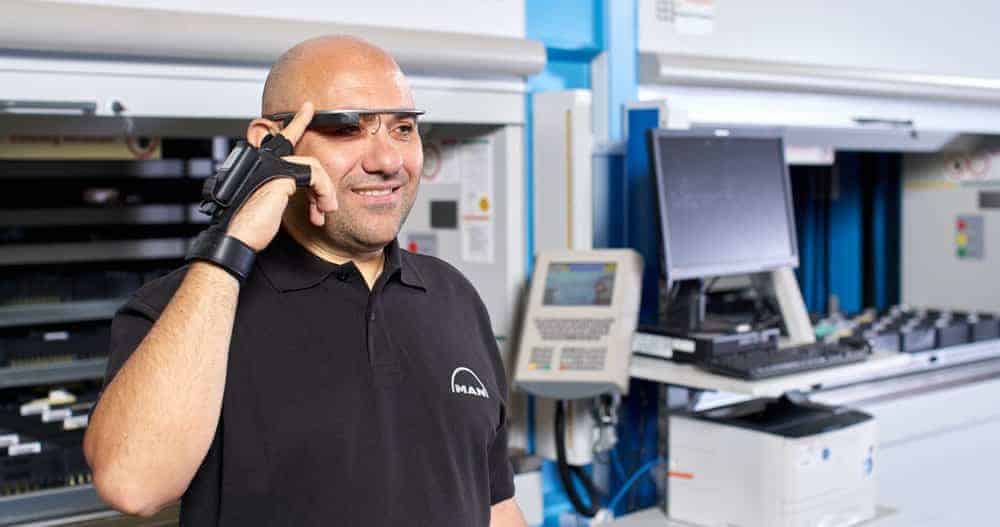Data glasses in the high rack


The implementation partner Nxtbase has made various enhancements and adaptations in order to use the Google Glass augmented reality data glasses in an industrial environment.
The operating system has been modified to prevent communication with the outside world or the Internet. A powerful WLAN connection was also implemented.
The user cannot leave the storage application, which prevents the camera from taking photos or videos, for example.
With the data glasses, the relevant warehouse storage and retrieval processes can be carried out in real time with a direct SAP connection. The warehouse worker receives all information relevant to the respective work process directly on the glasses from the productive SAP system.
Storage and retrieval
During putaway, the material is initially stored in a so-called SAP interim storage type. There, the employee picks up the material and scans the corresponding goods receipt slip.
He now sees all relevant information such as material, quantity, batch, special stock etc. on the data glasses. He checks the quantity and can adjust it by swiping the quantity field on the data glasses if there is a discrepancy.
He then stores the material in the storage bin. This storage bin is entered by scanning and then transmitted to SAP. If it is a storage bin that is permitted for the material, the employee can carry out the posting via TAP (a single tap on the touchpad of the data glasses) on the data glasses and thus complete the putaway of the material.
During picking, i.e. the removal of materials from the warehouse, the employee is shown the individual transfer orders on the data glasses according to a prioritization defined in SAP customizing.
He then first goes to the storage type shown on the display and then to the storage bin shown. There he removes the requested material in the desired quantity.
If the requested quantity is not available, he can adjust it on the data glasses, as already described for storage. To ensure that the employee has taken the correct material from the correct compartment, they must confirm the storage location by scanning.
If the storage bin is correct, he can carry out the posting in SAP via TAP on the data glasses and then process the next transport order.
A direct line to the high racks
A special feature is the direct connection of the high-bay lifts to the data glasses. If a material stored in the lift is requested on the smart glasses, the corresponding shelf is automatically moved forward from the lift and the employee can remove the material. The employee can also move individual trays in and out using the menu on the smart glasses.
The lifts are controlled in the Abap programming language in SAP. First, the storage bin structure is used to recognize that the storage type is a lift, and the lift number and tray are found.
SAP now communicates directly with the lift controller via SOAP protocol without intermediate middleware, and the lift controller advances the tray on which the material to be removed is located.
Picking and storage at the lift using data glasses is then carried out in exactly the same way as in a conventional warehouse. By scanning the storage location (barcode), the correct removal is ensured and sent to SAP via TAP on the handle of the data glasses. If the storage location and removal quantity are correct, the process is posted directly in SAP.
Further advantages in sight
In order to benefit even more from augmented reality technologies in the future, the project team is testing new smart glasses and other functions such as the visual labeling of storage locations or pick-by-voice support.







1 comment
Jörg Jonas-Kops
Hallo Hallo,
wir von nxtBase technologies haben die Lösung zusammen mit MAN entwickelt, wobei es mittlerweile eine komplett sprachgesteuerte Variante gibt, die wir auf der CEMAT2018 zusammen mit Haenel vorgestellt haben.
Grüße
Jörg Jonas-Kops